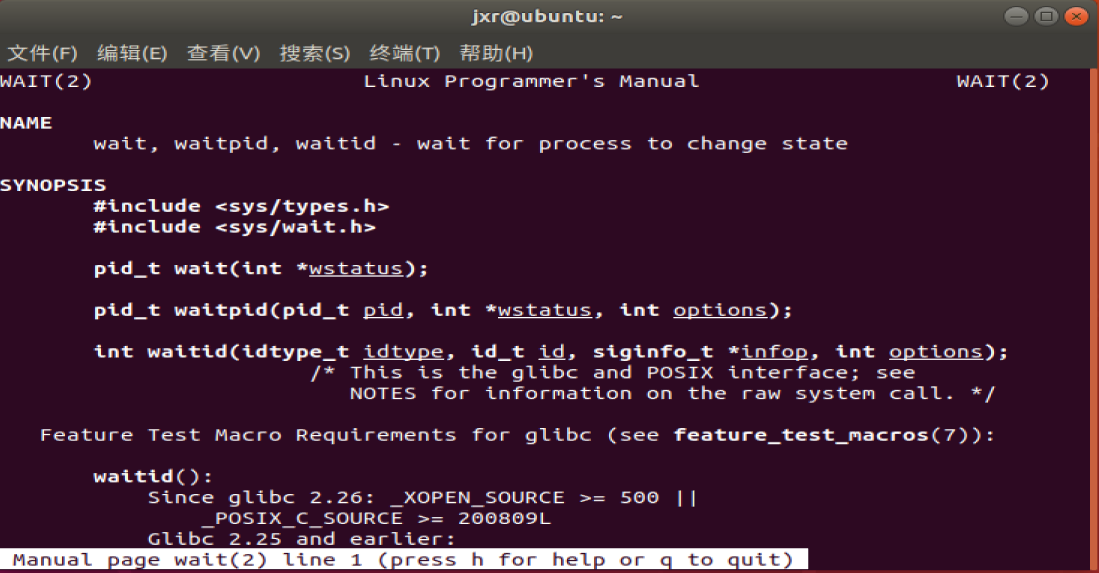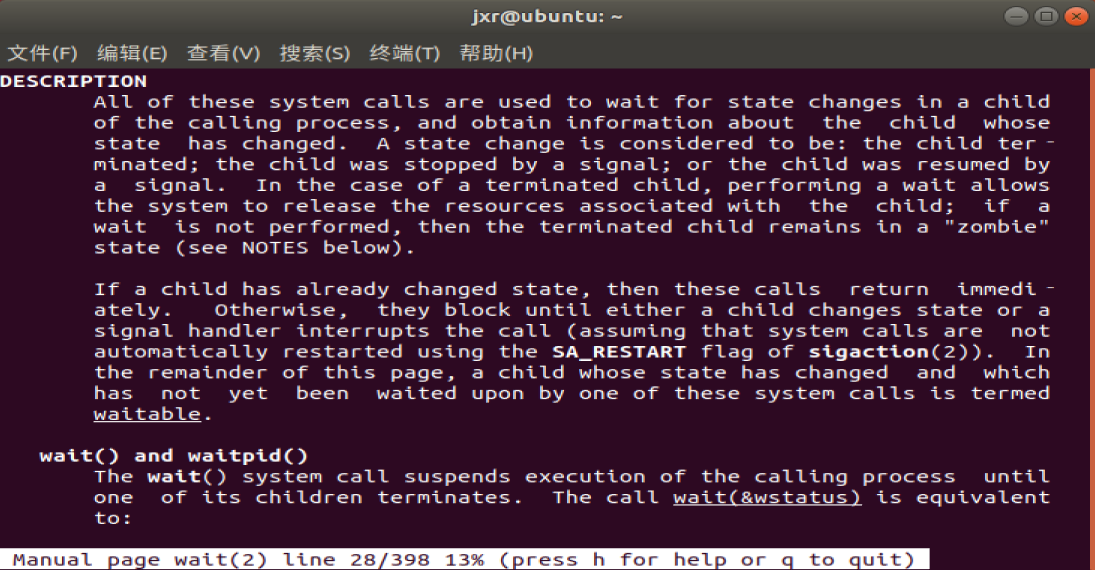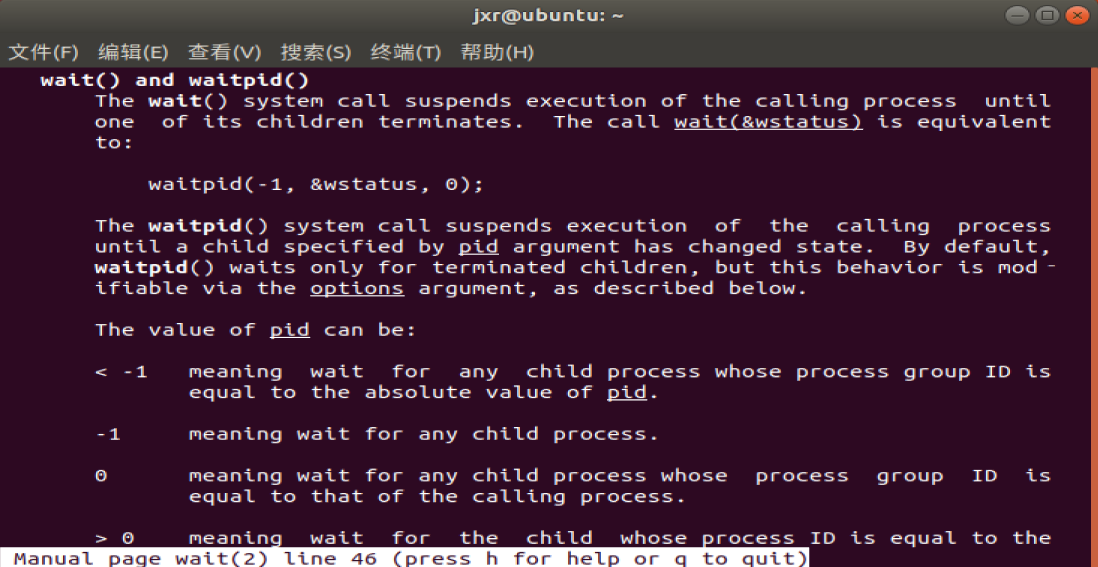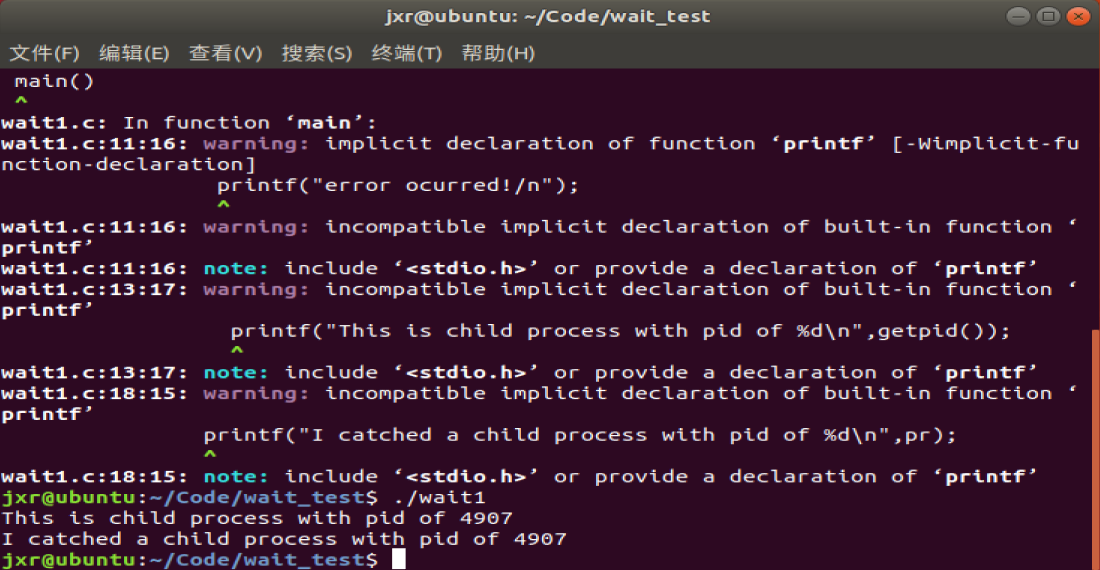任务详情
1 用man wait, man waitpid学习wait waitpid的使用
2 写出wait 的测试代码,要能说明你理解了wait 的返回值的每一位的含义
实验步骤
1.用man wait, man waitpid学习wait waitpid的使用
使用man 2 wait可以看到函数原型,其中可以看到在2.6版本中新增叫了waitid()函数。
可以看到函数头文件:
#include <sys/types.h> /* 提供类型pid_t的定义 */
#include <sys/wait.h>



wait()函数功能:wait()函数使父进程暂停执行,直到它的一个子进程结束为止,该函数的返回值是终止运行的子进程的PID. 参数status所指向的变量存放子进程的退出码,即从子进程的main函数返回的值或子进程中exit()函数的参数。如果status不是一个空指针,状态信息将被写入它指向的变量。
waitpid函数功能:waitpid()的作用和wait()一样,但它并不一定要等待第一个终止的子进程,它还有若干选项,如可提供一个非阻塞版本的wait()功能等。实际上wait()函数只是waitpid()函数的一个特例。
2.写出wait 的测试代码,要能说明你理解了wait 的返回值的每一位的含义
宏定义描述:
WIFEXITED(wstatus):如果进程子进程正常结束,返回一个非零值
WEXITSTATUS(wstatus):返回子进程退出码;该值由状态参数的最低有效8位组成(仅当WIFEXITED返回值非零时该macro才会被调用)
WIFSIGNALED(wstatus):如果子进程被一个信号终止,则返回一个非零值
WTERMSIG(wstatus):返回终止这个子进程的信号码(仅当WIFSIGNALED返回值非零时该macro才能被调用)
WCOREDUMP(wstatus):如果这个子进程生成了一个核心转储(core dump),返回一个非零值(仅当WIFSIGNALED返回值非零时该macro才会被调用)
WIFSTOPPED(wstatus):如果子进程因接收一个信号暂停,返回一个非零值
WSTOPSIG(wstatus):返回这个暂停信号的信号码(仅当WIFSTOPPED返回值非零时该macro才会被调用)
WIFCONTINUED(wstatus):如果子进程因接收一个信号而恢复运行,则返回一个非零值
测试代码1:
#include <sys/types.h>
#include <sys/wait.h>
#include <unistd.h>
#include <stdlib.h>
main()
{
pid_t pc,pr;
pc=fork();
if(pc<0) /* 如果出错 */
printf("error ocurred!/n");
else if(pc==0){ /* 如果是子进程 */
printf("This is child process with pid of %d
",getpid());
sleep(10); /* 睡眠10秒钟 */
}
else{ /* 如果是父进程 */
pr=wait(NULL); /* 在这里等待 */
printf("I catched a child process with pid of %d
",pr);
}
exit(0);
}
 测试代码2: ``` #include
测试代码2: ``` #include pc=fork();
if(pc<0) /* 如果出错 */
printf("error ocurred!
");
else if(pc==0){ /* 子进程 */
printf("This is child process with pid of %d.
",getpid());
exit(3); /* 子进程返回3 */
}
else{ /* 父进程 */
pr=wait(&status);
if(WIFEXITED(status)){ /* 如果WIFEXITED返回非零值 */
printf("the child process %d exit normally.
",pr);
printf("the return code is %d.
",WEXITSTATUS(status));
}else /* 如果WIFEXITED返回零 */
printf("the child process %d exit abnormally.
",pr);
}
}
<img src="https://img2018.cnblogs.com/blog/1800808/201911/1800808-20191110140918842-1297064091.png" heigth="400"/>